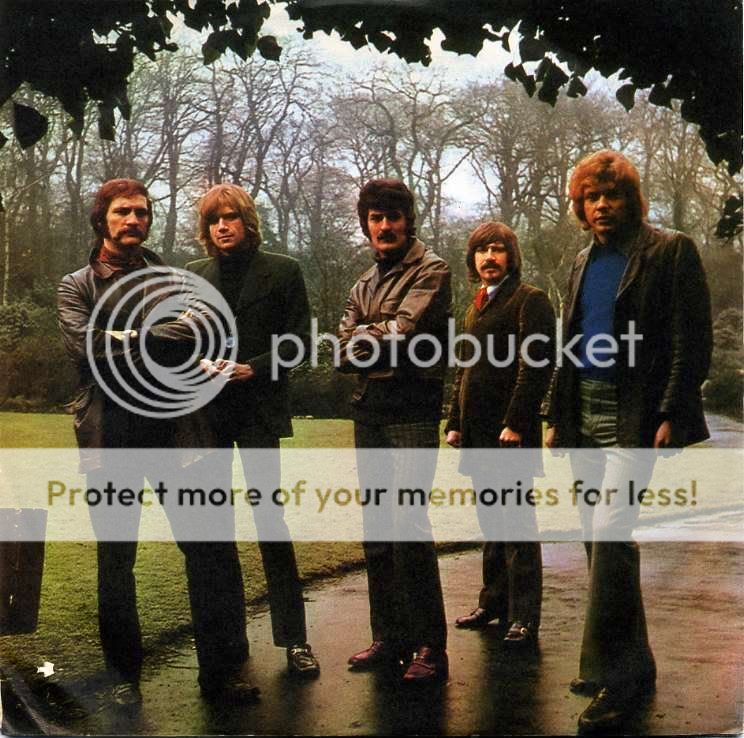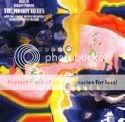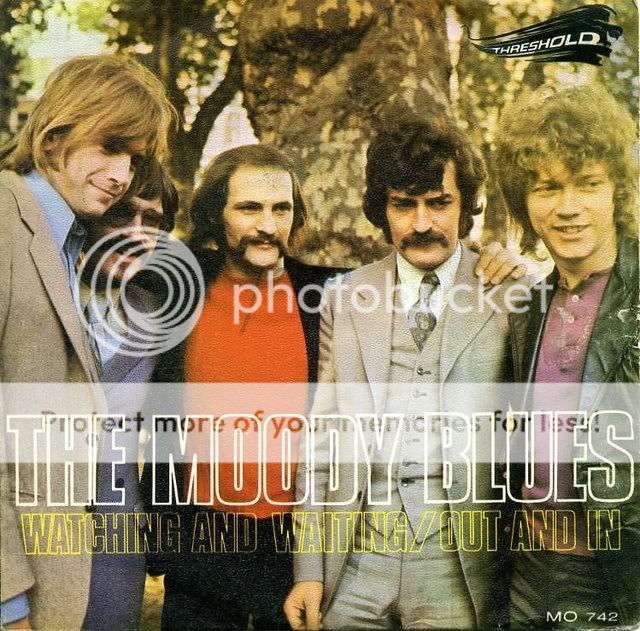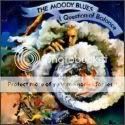In The Studio – The Moody Blues: 20th Century Masters

The Moody Blues are a British rock band originally from Birmingham. Founding members Michael Pinder and Ray Thomas performed an initially rhythm and blues–based sound in Birmingham in 1964 along with Graeme Edge and others, and were later joined by John Lodge and Justin Hayward as they inspired and evolved the progressive rock style. Among their innovations was a fusion with classical music, most notably in their seminal 1967 album Days of Future Passed.
The band has had numerous hit albums in the UK, U.S., and worldwide. They remain active as of 2008, with a USA Spring Tour and a U.K. Fall Tour announced.

The Moody Blues formed on 4 May 1964, in Erdington, Birmingham, England. Ray Thomas, John Lodge, and Michael Pinder had been members of El Riot & the Rebels, a regionally-popular band. They disbanded when Lodge, the youngest member, went to technical college and Pinder joined the army. Pinder then rejoined Thomas to form the Krew Cats and enjoyed moderate success. The pair recruited guitarist/vocalist Denny Laine, band manager-turned drummer Graeme Edge, and bassist Clint Warwick. The five appeared as the Moody Blues for the first time in Birmingham in 1964. The name developed from a planned sponsorship from the M&B Brewery and was also a subtle reference to the Duke Ellington song, “Mood Indigo”.

Soon, the band obtained a London-based management company, ‘Ridgepride’, formed by ex-Decca A&R man Alex Murray (Alex Wharton), who helped them land a recording contract with Decca Records in the spring of 1964. They released a single, “Steal Your Heart Away” that year which made it onto the charts. But it was their second single,”Go Now” (released later that year), which really launched their career, being promoted on TV with one of the first purpose-made promotional films in the pop era, produced and directed by Wharton. The single became a huge hit in the United Kingdom (where it remains their only Number 1 single to date) and in the United States where it reached #10

Wharton left the management firm and the group released a series of unsuccessful singles. In the summer of 1966, Warwick left the group. He was briefly replaced by Rod Clark but by October, Laine and Clark had also departed the group. They were immediately replaced by John Lodge. an El Riot bandmate of Pinder and Thomas, and Justin Hayward, formerly of The Wilde Three.

The band soon realised that their style of American blues covers and novelty tunes was not working for them and decided to develop an original style. Their new style, featuring the symphonic sounds of Pinder’s mellotron and Ray Thomas’ flute, and incorporating distinct psychedelic influences, was to be developed in a concept album revolving around an archetypal day in the life of everyman.
Tuesday Afternoon

The Moody Blues’ contract with Decca Records was set to expire and they owed the label several thousands of pounds in advances. However, Deram Records (a London/Decca imprint) chose the band to make an LP in order to promote Deramic Stereo and the group was to be forgiven its debt to the label to make a rock and roll version of Antonin Dvorak’s New World Symphony. The Moody Blues agreed but insisted that they be given artistic freedom and be left without supervision. They then convinced Peter Knight, who had been assigned to arrange and conduct the orchestral interludes, to collaborate on a recording of their stage show instead. Deram executives were initially skeptical about the hybrid style of the resulting concept album, Days of Future Passed (1967). However, it was to become one of the most successful commercial releases of all time. Decca producer Tony Clarke was chosen to produce the album, and the band carried on a durable working relationship with Clarke (sometimes known to fans as “the sixth Moody”) who would end up producing all of their albums and singles for the next eleven years. Engineer Derek Varnals would also contribute heavily to the creation of the early Moodies’ studio sound.
Nights in White Satin

The album plus two singles, “Nights in White Satin” and “Forever Afternoon” (more commonly referred to as “Tuesday Afternoon”), became massively popular, as was the 1968 follow-up LP, In Search of the Lost Chord. Also included on this album is the song “Legend of a Mind”, a song written by Ray Thomas in tribute to LSD guru Timothy Leary which encompassed a masterful flute solo performed by Thomas. Justin Hayward began playing sitar and incorporating it into Moody Blues music, having been inspired by George Harrison.
Ride My See Saw

Graeme Edge found a significant secondary role in the band as a writer of poetry, and nearly all of their early albums from the late 60’s begin with Mike Pinder reciting poems by Edge that were conceptually related to the lyrics of the songs that would follow.


The band’s music continued to become more complex and symphonic, with heavy amounts of reverberation on the vocal tracks, resulting in 1969’s To Our Children’s Children’s Children — a concept album based around the band’s celebration of the first moon landing. The album reportedly even went to the moon on Apollo space missions. (According to the booklet in the 4-disc anthology “Time Traveler”) The album closes with the fan-favorite ‘Watching and Waiting’, composed by Ray Thomas and Justin Hayward.
Higher and Higher

Although the Moodies had by now defined a somewhat psychedlic style and helped to define the progressive rock (then also known as ‘art rock’) sound, the group decided for a while to record only albums that could be played in concert, losing some of their full-blown sound for their next album, A Question of Balance (1970).
OM

This album, reaching #3 in the American charts and #1 in the British charts, was indicative of the band’s growing success in America. Justin Hayward began an artful exploration of guitar tone through the use of numerous effects pedals and fuzz-boxes, and developed for himself a very melodic buzzing guitar-solo sound. For their next two albums, Every Good Boy Deserves Favour (1971) and Seventh Sojourn (1972) (that reached #1 in both the UK and the U.S.), the band returned to their signature orchestral sound which, while difficult to reproduce in concert, had become their trademark. Edge, the long standing drummer-poet, started writing lyrics intended to be sung, rather than verses to be spoken
Voices in the Sky

In late 1972, a re-issue of the five-year-old “Nights In White Satin” became the Moody Blues’ biggest U.S. hit, soaring to number two on the Billboard Hot 100 and becoming a certified million-seller; the song had “bubbled under” the Hot 100 charts on its original release. The song also returned to the UK charts, reaching #9, ten places higher than its original release in 1967.
Are You Sitting Comfortably

The Moodies were also among the pioneers of the idea that a successful rock band could promote itself through its own label, following the Beatles’ creation of Apple Records. After their On the Threshold of a Dream album (1969), they created Threshold Records, prompted in part by disputes with London/Deram over album design costs (their gatefold record jackets and expensive cover art were not popular with company executives). Threshold would produce new albums and deliver them to London/Decca who acted as distributor. The group attempted to build Threshold into a major label by developing new talent — most notably the UK hard rock band Trapeze and the Portland, Oregon classical-acoustic sextet Providence — but these efforts proved unsuccessful and the Moodies eventually returned to more traditional recording contracts. However, they did lay the groundwork for other major acts to set up similar personal labels and distribution deals including The Rolling Stones’ own label and Led Zeppelin’s Swan Song and all of the Moodies’ studio releases from 1969 to 1999 would bear the Threshold logo on at least one of their format versions.
Lovely To See You

|
starfishred wrote on Apr 4, ’08
I just love them always have especially nights in white satin
|
|
terryridgway wrote on Apr 4, ’08
Superb article….
|
|
lauritasita wrote on Apr 4, ’08
I think I got a little carried away with this post, but so what !!!
|
|
lauritasita wrote on Apr 4, ’08
I try to look for older videos.
|
|
crosswindsart22 wrote on Apr 4, ’08
Exceptional collective classics, thank you
Dyxie Dymond*ldbg Fort Morgan Alabama |
|
lauritasita wrote on Apr 4, ’08
Thanks for your comment Dyxie !
|
|
lauritasita wrote on Apr 5, ’08
nemo, they are still together, but it’s only Justin Hayward, John Lodge, and Graeme Edge. Ray’s been gone a while now, and there’s a girl from the southern U.S. who has been replacing him. Her name is Norda Mullen. She’s actually pretty good.
|
|
lauritasita wrote on Apr 5, ’08
I didn’t really care for the sound Patrick Moraz gave them, but their songs were still good. I did see them with Norda. She’s not bad, really. I miss Mike Pinder. I wish they would make a record together one last time…
|
|
lauritasita wrote on Apr 5, ’08
He put out a couple of solo records. If I can find some cuts, I post them for you.
|
|
asolotraveler wrote on Apr 6, ’08
i loved timothy leary’s dead….
|
|
lauritasita wrote on Apr 6, ’08
Yeah, asolo, I remember that one. I loved Ray Thomas’ voice.
|
|
terryridgway wrote on Apr 7, ’08
Hi, As part of their UK tour The Moodies play a homecoming gig in Birmingham on the 27th of September at the NEC, should be good… ( I like about 25 miles from Birmingham and intend to get tickets)….
|
|
lauritasita wrote on Apr 7, ’08
terry, let me know how it was ! I still love them even though there’s only 3 original members left.
|

Comments
In The Studio – The Moody Blues: 20th Century Masters — No Comments
HTML tags allowed in your comment: <a href="" title=""> <abbr title=""> <acronym title=""> <b> <blockquote cite=""> <cite> <code> <del datetime=""> <em> <i> <q cite=""> <s> <strike> <strong>